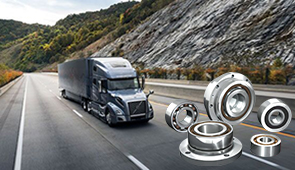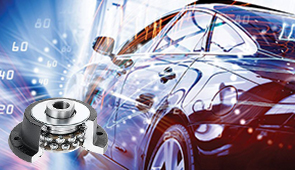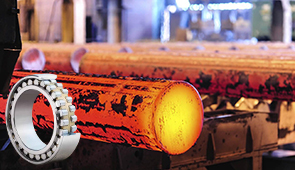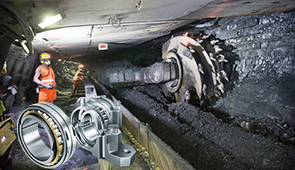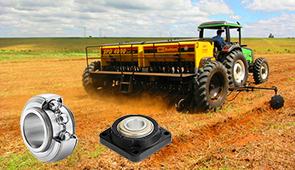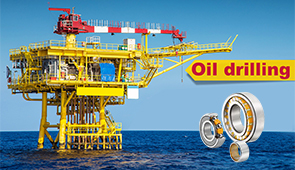Understanding Roller Bearings: Types and Applications
Roller bearings are indispensable components in a wide range of machinery, offering critical support for rotational and linear motion while minimizing friction and wear. Whether you’re working in heavy-duty industrial settings or precision-engineered applications, understanding the different types of roller bearings and their specific uses is essential for optimizing performance, efficiency, and longevity. This article provides a detailed exploration of the various types of roller bearings, including their unique designs, operational benefits, and common applications.
What are roller bearings, and how do they work?
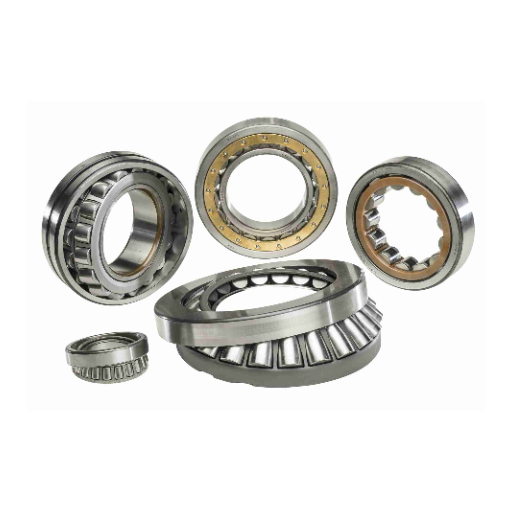
What is the structure of a roller bearing?
The configuration of the roller bearing is meant to minimize friction for rotating systems while simultaneously managing radial and axial loads. A roller bearing comprises four parts:
- Inner Ring: Inner rings provide the rolling elements with an uninterrupted and smooth surface as the shaft rotates, ensuring the rolling elements are able to roll smoothly. This part is pre-mounted over the shaft which facilitates stable rotational motion.
- Outer Ring: The roller bearing assembly is covered by the outer ring, which provides an external raceway for the rolling elements. Normally, the outer ring is mounted on the housing so it is stationary while the rolling elements can move freely concerning the shaft.
- Rolling Elements: This part includes all the concrete and tapered-shaped parts, which include cylindrical rollers and needle rollers that reduce or facilitate motion by introducing friction between the two rings. They can support greater loads than balls because of their larger contact radius.
- Cage or Separator: This component has the rolling elements and guarantees adequate distance between them so that there is no contact. This part is essential for making sure low internal wear occurs with a high operational efficiency.
Each different style of roller bearing, like cylindrical, spherical, or tapered roller bearings, has components that are structurally slightly different to enhance performance in particular fields. Choosing specific materials, surface treatments and adding seals or shields increases protection against wear so that the bearing functions reliably in various conditions.
How do rolling elements reduce friction?
Rolling elements like cylindrical or spherical rollers reduce friction by decreasing the surface contact area between moving components. The sliding motion of a body generates significant resistance because the surfaces come in contact over a large area. However, during rolling, this contact is transformed to a point or line of contact. Thus rolling motion consumes lesser energy to overcome resistance thereby leading to improvement in energy loss due to friction.
Moreover, modern engineering materials and coatings are particularly important in achieving better performance about friction. Modern rolling elements are often provided with friction-reducing coatings or surface hardening treatments that increase roughness, which results in lesser wear and energy loss during a lengthy period of use. The application of active lubricants also helps in the retention of a thin lubricant film between the surfaces of contact, which diminishes the possibility of direct contact between the metal surfaces, thus facilitating movement under varying loads and speeds.
By skillfully manipulating the design, shape, size, and material of the rolling elements, manufacturers can customize the performance of these components to take care of specific industrial requirements, thus improving the reliability and efficiency of the operations. Less effort is required to perform the work where contact friction is eliminated,m eaning better energy efficiency, an increased lifespan of the movement machine elements, and improved overall performance of the entire system.
What types of loads can roller bearings support?
Roller bearings are constructed to support two main kinds of loads: axial and radial. Radial loads are those that are applied perpendicular to the axis of rotation. They are encountered in applications that involve the bearing being subjected to heavy weights or significant forces. These are the most common types of forces and roller bearings due to their specific design, having rolling elements, enable great distribution of contact surface so friction and wear is minimized. While axial loads are parallel forces that act in line with the shaft that experiences thrust or side forces to the bearing system. Bearings that are designed for axial loads can withstand dynamically unstable conditions because system performance could be impacted due to high torque combined with misalignment.
Some roller bearing types, like tapered roller bearings, are designed to support a radial load and an axial load simultaneously. These bearings are common in heavy machinery and automotive uses where multiple loads are applied at different angles around the bearing. For instance, tapered roller bearings are used in applications with complex load profiles, including wheel hubs, gearboxes, and powerful industrial machines. Cylindrical roller bearings are better at supporting radially directed loads—axial loads can only be supported if the bearing is modified or combined with other components.
The design flexibility makes roller bearings suitable for a variety of industries like automotive, aerospace, construction, and energy. Modern designs use ceramics along with carbon composites and polymers in order to increase their operational efficiency and load-bearing ability. Moreover, new developments in lubrication and surface treatment technologies improve the bearing’s capacity to endure harsh conditions, like extreme temperatures and heavy contamination, while still reliably supporting various types of loads. This adaptability highlights their reliability and accuracy in modern engineering systems.
How do needle roller bearings differ from other types?
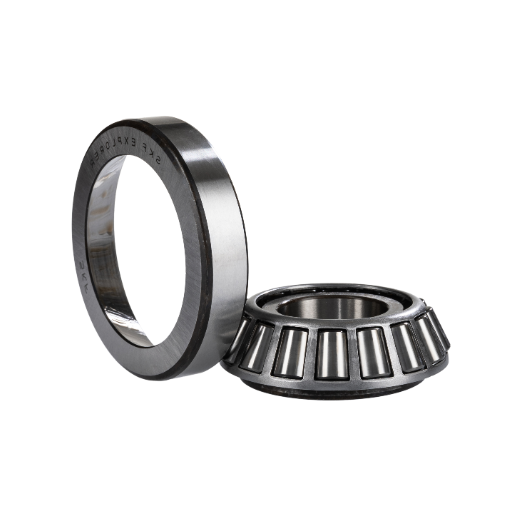
What are the key features of needle roller bearings?
Few types of bearings are more refined than needle roller bearings, which use thin, cylindrical rollers with a length-to-diameter ratio of 4:1 or greater. This construction allows them to carry heavy radial loads while still maintaining a tall and slender cross-section suitable for use in areas where there is little available radial room. Furthermore, the reduced diameter of the rollers decreases rotational inertia, making them more efficient in high-speed applications.
Needle roller bearings are characterized by having a relatively high load-carrying capacity for their size, they have excellent deformation resistance under heavy loads, and they are good at handling oscillating motions. Many designs have an outer ring and cage assembly that aids in the alignment of the rollers and distribution of loads. Some configurations are made without any cages to increase the number of rollers that can be accommodated, which provides higher load capacity.
Also, modern practices of manufacturing maintain the accuracy of roller dimensions and surface finishes, which further reduces friction, wear, and tear. Depending on requirements, needle roller bearings also come in different configurations, such as having an open-end, sealed, or combination types that can bear radial and axial loads. Their vast range of applications showcases their adaptability and makes them crucial parts in industries such as automotive and aerospace. In these bearings, materials technologies, lubrication systems, and thermal treatment of the components are very important for optimal performance, reducing operational life and efficiency.
In which applications are needle rollers typically used?
Needle roller bearings are highly specific parts constructed for use in scenarios requiring a compact size and greater rotational performance. Their structural design allows small, long cylindrical rollers spaced in rotatory blades, enabling them to bear heavy radial loads where imbalanced bearings would otherwise be unfeasible. Due to their capabilities, needle roller bearings are incorporated in many vital industries, especially in ones that demand a greater level of efficiency and durability.
Transmission systems in vehicles incorporate different types of internal and external needle rollers during construction, which makes them one of the most used bearings in the automotive industry. They have an overwhelming usage in motors, driveshafts, engine parts, and rocker arms. These seas can withstand high temperature and pressure environments, as well as support high-speed operations, making them ideal in harsh settings. This is seen in automatic transmissions, where needle roller bearings facilitate smoother gear shifts while improving vehicle fuel efficiency due to lowered friction. In two-wheelers, like motorcycles, these components are used for chain tensioners, swing arm pivots, and clutches.
Apart from the automotive industry, roller needles are extensively used in industrial machinery and equipment. They are often located in robotics, machine tools, pumps, and conveyor systems where their small size and ability to carry loads efficiently makes them priceless. For instance, in the assembly line equipment of manufacturing plants, roller needle bearings allow for accurate and rapid functions, which reduces overall downtimes and maximizes plant productivity. Also, they are used in many actuators and landing gears in the aerospace industry where there is strict space and weight allowance to ensure safety standards are met, but still perform dependably. Their use in a wide range of applications demonstrates the versatility and advanced technology in roller needle bearings.
What are the advantages of needle roller bearings?
Needle roller bearings are useful in various areas in industrial and engineering fields because of the unique advantages they offer. One of their primary advantages is their small shape, as they offer a high load-carrying capacity relative to their size. This makes them an ideal choice for applications that have stragetic spatial constraints. Moreover, their low sectional height reduces the radial footprint, enabling integration into compact systems without sacrificing performance.
Needle roller bearings also offer other primary advantages, such as the ability to withstand dynamic and static loads due to the elongated rollers. The additional weight is better distributed, which decreases the stress concentration. This feature enhances durability and further extends the operational life span of the component. Through precise manufacturing tolerances, friction and heat generation are reduced, which improves energy efficiency, making needle roller bearings more effective.
Another primary feature that makes needle roller bearings stand out is their ability to withstand turning movements and rotating speeds. This makes them perfect for use in industrial machinery and automotive transmissions. Recent advances in corrosion-resistant materials, coating, and lubrication systems have enhanced their ability to endure extreme conditions, further enhancing needle roller bearings as the best option for high-performance applications.
What are the benefits of using spherical roller bearings?
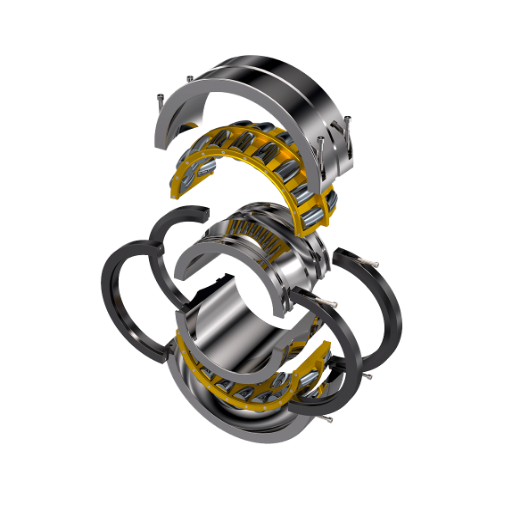
How do spherical roller bearings handle misalignment?
The misalignment of the shaft and the bearing housing is often caused by mounting errors or operational deflections, which spherical roller bearings are particularly designed to correct. This design is possible due to the internal geometry, which includes a spherical shape of the rolling elements and the raceways. The spherical shape of the outer raceway permits a ball-and-socket structure that enables the bearing to self-align and compensate for angular misalignment. This feature helps in equal load distribution on the rolling elements, thus ensuring the performance and durability of the bearing, even with misalignment.
Both radial and axial loads are balanced under misaligned conditions due to the self-supporting feature of spherical roller bearings combined with dual rows of rollers manufactured with the bearings. The bearing can self-align up to several degrees of angular misalignment, varying based on design and application prerequisites. Frequent designs usually allow 1–2 degrees of misalignment, while more advanced designs offer even greater deviations. With these capabilities, an installation does not require time-consuming precision aligning to be done beforehand, which saves time and the possibility of failure due to alignment errors.
Recent changes in material technologies, as well as lubrication systems, have further enhanced the reliability of spherical roller bearings in handling misalignment. Precision machining, high-performance steel alloys, and external business setting optimised surface finishes all contribute to the lowering of internal stress and the heat dissipated during operation. Moreover, modern lubrication methods guarantee that a constant film of lubricant will be present even in the case of misalignment of the bearing. Friction and wear are, therefore, minimized, which prolongs the service life of the bearing and diminishes the maintenance costs on applications like heavy machinery, power transmission systems, and construction equipment. All of these engineering features make spherical roller bearings reliable solutions in tackling harsh industrial applications where frequent misalignment poses possible critical issues.
What industries typically use spherical roller bearings?
Spherical roller bearings are widely used in various industries due to their tolerance for heavy loads and significant misalignment. Their common applications include:
- Mining and Quarrying: Spherical roller bearings for mining and quarrying equipment have extensive applications in heavy machinery such as conveyors, crushers, and vibrating screens. These machinery parts are exposed to ultra-heavy repetitive loading, strong environmental vibrations, and harsh climates.
- Cement Manufacturing: Spherical roller bearings are also highly utilized in cement manufacturing due to the heavy radial and axial loads placed on roller presses, kilns, and grinding mills that require continuous operation during cement production.
- Power Generation: Spherical roller bearings are employed in turbines, gearboxes, and generators of both fossil-fuel and renewable power plants. These bearings enable the machinery to endure high-speed operation, extreme temperature changes, and ensure proper geometric alignment.
- Steel and Metal Processing: The demanding operations in rolling mills and continuous casting lines require strong bearings that support high workloads while protecting against rust, dirt, high temperatures, and steel debris.
- Pulp and Paper Industry: Spherical roller bearings are essential for rollers, compressors, and calendars in paper plants to bear the heavy structural loads and operational speeds without realigning to eliminate the misalignment index.
- Marine and Offshore Engineering: These bearings work dependably for maritime purposes as deck machinery and propulsion systems are exposed to moisture and corrosive environments, which would otherwise render most machinery useless.
Sphrical roller bearings are highly effective in enduring harsh shocks, high misalignment, poor working conditions and high wear and tear. These bearings aid machinery in rotary motion which makes them critical for dealing with large industrial equipment high in load.
Why are tapered roller bearings used in high-load applications?
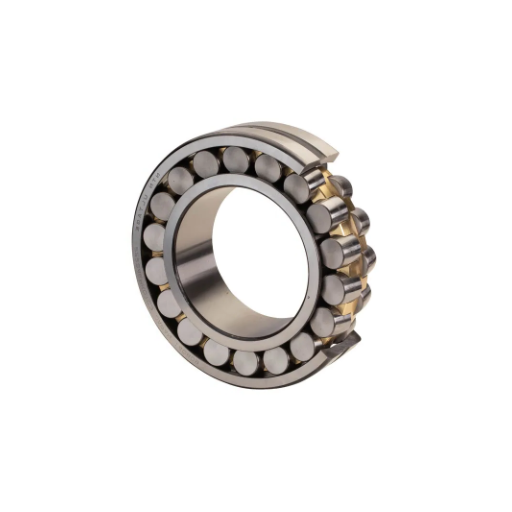
How do tapered roller bearings handle axial loads?
Tapered roller bearings receive both radial and significant axial loads, making them unique compared to other bearings, due to their construction features–including tapered inner and outer rings and rollers. These components enable the bearing to support loads more effectively by distributing them over larger areas. The amount of axial force that a bearing can support is highly influenced by its taper angle; the sharper the angle, the more load the bearing can sustain. Unlike point contacts, this shape provides line contact, which is better able to withstand harsh working conditions and decreases stress concentrations, which increases overall durability. These absolutes increase the effectiveness of tapered roller bearings in automotive wheel hubs, gearbox systems, as well as in massive industrial machinery.
From the tapered roller bearing geometry, it can be noted that it accommodates the application of an axial load using the opposing angles of the raceways. Each roller contacts the raceways with an angle, allowing the force to be channeled through each roller towards the shaft or housing it supports. This arrangement supports the bearing and allows it to sustain higher loads with reasonably less deformation. The sophisticated geometry of the tapered rollers likewise guarantees better accommodation of axial loads compared to other types of bearings, like ball bearings. As a result, stability and precision are preserved even when the bearings are subjected to axial loads. This characteristic is vital for maintaining the reliability of the entire bearing system and, ultimately, the machinery.
While these features already provide an exceptional advantage, further enhancements to the design and materials of tapered roller bearings have increased their performance potential. Advanced anti-friction treatments, advanced lubricants and bearing materials, and improved surface treatments increase the capacity of the bearings to withstand g forces applied from high rotational speeds and long durations of service at mixed load conditions. The ability of modern manufacturing processes to allow precise sealing has also helped decrease bearing contamination from dust, moisture, and even high temperatures, improving operational efficiency. All these qualities combined enable tapered roller bearings to withstand high-load applications across different industries, providing strength and adaptability while maintaining durability.
What makes tapered roller bearings suitable for heavy loads?
When compared to other bearing types, tapered roller bearings are capable of bearing higher radial and axial loads simultaneously, thanks to their specific features. These taper roller bearings are optimally efficient for heavy-duty operations, such as mining, construction, or heavy transportation. The wide load distribution, along with the belt-shaped rollers, enables a reduction of pressure around the contact surfaces, which decreases the chance of material fatigue.
Moreover, the design characteristics break down the bearing’s tapered inner and outer raceways, which have tapered rollers alongside them; this allows optimized load-bearing potential to shield against blockages. There is also specific architecture supporting effective rotating functionalities, along with engineered shapes and more precise manufacturing that meets the rounded edges and eliminates misalignment that could disrupt the movement and subsequently results in added wear and tear on the meter.
When it comes to availability, tapered bearings are manufactured using high-grade alloy steels. These alloys are designed to resist deprecation from wear and tear alongside retaining stability when put under severe heat and pressure. Optimized toughness and strength of the components are advanced by the processes of heat treatment. The aforementioned factors, in addition to the decreased tolerances of the components, culminate into the enhanced performance that the tapered roller bearings offer under loads.
The tapered roller bearings’ heavy load capacity is enhanced by the lubrication and sealing system used on them. Proper lubrication enables the bearing to have minimum friction, heat, and other forms of wear that deteriorate bearing life. In addition to modern sealing methods, dust, water, and other debris are kept away from the bearing system, which ensures reliable performance even in harsh environments. These design features increase the maintenance intervals and service life, thereby ensuring the tapered roller bearings operate dependably under sustained heavy loads, which is essential for industry-grade machinery and equipment.
What factors affect the performance of cylindrical roller bearings?
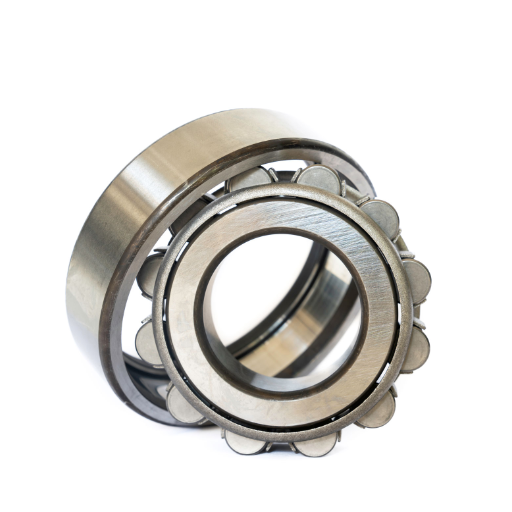
How does the cylindrical design influence load capacity?
The cylindrical configuration of roller bearings improves the load capacity by optimizing the loading distribution to a greater contact area. Unlike ball bearings, which have point contact, cylindrical roller bearings have line contact. This type of contact allows for greater radial load-bearing capabilities because more of the surface area is in contact with the raceways. For this reason, cylindrical roller bearings are better suited for high-load industrial applications that are subjected to heavy radial forces, such as in gearboxes, electric motors, and other heavy machinery.
Furthermore, the particular geometry of the design leads to lower stress concentrations on the bearing components, decreasing the chances of material fatigue and premature wear. The parallel arrangement of the cylindrical rollers allows even load distribution among the rolling elements, increasing operational efficiency, decreasing heat generation, and reducing overheating during extended periods of operation. Other than increasing the dynamic load rating of the bearing, this feature allows the bearing to endure greater loads and slight misalignments in some designs while still maintaining performance.
Nowadays, innovations in material sciences, alongside with accuracy in manufacturing, greatly enhance the load-bearing capacity of cylindrical roller bearings. To illustrate, the adoption of modern surface treatments, high-strength steel, or ceramic rollers not only reduces friction but also increases the life span of the components even under high-stress situations. Furthermore, the use of double or four-row cylindrical roller bearings with multiple rows of rollers greatly augments the load-bearing capacity without significantly increasing the size of the bearing itself—thereby making the bearing crucial in high-intensity industrial systems.
What role does lubricant play in maintaining performance?
Lubricants are essential to the efficiency and lifespan of mechanical parts like bearings and turning gears. Their principal function is to reduce friction between moving surfaces and, therefore, wear and tear through contact that may corrode the material. Lubricants also remove heat produced through friction by making protective films which helps in maintaining operating temperatures in areas with great stress.
Also, lubricants protect machinery from dust, dirt, moisture, and other harmful contaminants that can damage the machine. Modern lubricants can also include anti-corrosion, extreme pressure, and oxidation reducing additives for more specific purposes. Selecting the right lubricant is important because it can affect the efficiency, fuel economy, load capacity, and maintenance expenses, particularly in industrial systems with heavy workloads.
Predictive maintenance has been facilitated by other developments in lubrication technologies using sensors and monitoring systems that check viscosity, temperature, and level of contamination in real time. This approach allows for better scheduling of maintenance which improves reliability, reduces unexpected halts in the operation, and lowers the total operational costs.
How do high-speed applications impact cylindrical roller bearings?
The performance of cylindrical roller bearings used in high-speed applications, their life, and their operating values are sensitive to their load and speed conditions. The primary issues are friction aggravation, lubrication mechanisms, and centrifugal forces. At greater speeds, the rolling elements, as well as the cage, produce friction, which can result in great thermal energy. This build-up could result in the loss of material properties by exceeding the critical thermal limits of structural softening, causing the bearing to permanently lose stabilizing dimensions. Hence, effective means for thermal management and appropriate lubricant formulations for elevated temperatures are essential.
Moreover, high rotational velocities increase the centrifugal forces acting on the rolling elements. This can result in an uneven distribution of load, which aggravates mechanical wear. More advanced solutions employ lighter materials for the optimized cage geometry as optimization design sets aim to solve identified troubles. For instance, fiberglass-reinforced polyamide cages improve thermal stability, while precision-turned brass cages better withstand high rotational speeds.
The application of the correct amount of lubricant, as well as careful selection of the lubricant itself, significantly eliminates or reduces the issues addressed issue from above. It is recommended that oils with a high viscosity index or grease with wear-in-reducing compounds be used to ensure consistent coverage of the lubricating film at elevated rotational velocities. Outfitting systems with temperature and vibration real-time measurement sensors allows the industry to react quicker to signs of bearing failure and optimize the mechanical system’s protection while prolonging the bearing’s useful life.
Frequently Asked Questions (FAQs)
Q: What is a rolling bearing, and how does it differ from plain bearings?
A: A rolling bearing is a type of bearing that carries a load by placing rolling elements (such as balls or rollers) between two bearing rings called races. Unlike plain bearings, which operate with sliding surfaces, rolling-element bearings reduce friction by having the rolling elements roll between the races. This design creates significantly lower friction, allowing for higher speeds and better efficiency. Major manufacturers like SKF and FAG produce various types of rolling bearings, which typically offer longer service life and require less maintenance than plain bearings in many applications.
Q: What are the main types and applications of roller bearings?
A: The main types of roller bearings include cylindrical, tapered, spherical, and needle roller bearings. Cylindrical roller bearings are used in electric motors and industrial machinery where high radial loads are present. Tapered rolling bearings are ideal for automotive wheel hubs as they can handle both radial and axial loads. Spherical roller bearings accommodate misalignment and are used in heavy machinery. Needle roller bearings, with their small-diameter rollers, are perfect for applications with space constraints. These different roller bearing types are selected based on load requirements, speed, space limitations, and environmental conditions of the application.
Q: Why can roller bearings handle higher loads than ball bearings?
A: Roller bearings can handle higher loads than ball bearings because they have a larger contact area between the rolling elements and the races. While ball bearings make point contact with the races, roller bearings (whether cylindrical or tapered) make line contact, distributing the load over a greater surface area. This design feature allows roller bearings to support heavier radial loads while minimizing friction and heat generation. Industries requiring machinery to handle substantial weight or force typically choose roller bearings for their superior radial load capacity and durability under high-stress conditions.
Q: What are thrust bearings, and when are they used?
A: Thrust bearings are specially designed rolling bearings that handle axial loads (forces parallel to the shaft). They come in various types, including thrust ball bearings and roller thrust bearings. These bearings are often used in applications where the primary load is in the axial direction, such as in vertical pump shafts, machine tool spindles, and automotive clutch release mechanisms. Thrust roller bearings can carry significantly higher thrust loads than thrust ball bearings due to their greater contact area. The selection of roller thrust bearings depends on the load magnitude, speed requirements, and space constraints of the specific application.
Q: How do cylindrical and tapered roller bearings differ in applications?
A: Cylindrical roller bearings excel in applications requiring high radial load capacity with minimal axial loads. They’re typically used in electric motors, gearboxes, and rolling mills where pure radial forces are dominant. Tapered roller bearings, with their angled roller arrangement and bearing cone design, can simultaneously handle both radial and axial loads. This makes them ideal for automotive wheel hubs, differential pinions, and machine tool spindles where combined loading occurs. The tapered design allows the bearings to be adjusted for clearance or preload, which isn’t possible with cylindrical roller bearings, giving them versatility in applications where load directions may vary.
Q: What are the key dimensions to consider when selecting roller bearings?
A: When selecting roller bearings, the key dimensions to consider include the inside diameter (bore size that fits on the shaft), outside diameter (determines the housing fit), and width or thickness. These basic dimensions must match the application requirements precisely. Additionally, you should consider internal clearance, which affects how the rolling elements move within the races.
Q: How do needle roller bearings benefit compact machinery designs?
A: Needle roller bearings benefit compact machinery designs due to their small-diameter rollers that provide a high load capacity while maintaining a slim profile. These specialized rolling bearings are often used in automotive transmissions, rocker arms, universal joints, and small electric motors where space is limited but load requirements are substantial. Despite their compact size, needle bearings can handle significant radial loads while maintaining low friction performance. Their unique design allows for a large number of rolling elements within a small space, making them ideal for applications where the moving parts need to be close together while still requiring reliable bearing support.
Q: What maintenance practices extend the service life of roller bearings?
A: To extend the service life of roller bearings, regular lubrication is essential as it creates a film between the rolling elements and races, reducing friction and wear. The selection of proper lubricant type and quantity based on operating conditions is critical. Regular inspection for contamination, wear, and proper alignment helps identify potential issues before failure occurs. Temperature monitoring can indicate excessive friction that might damage the bearing. Proper installation techniques, including avoiding hammer blows directly to the bearings and using the right tools to apply force only to the ring being mounted, are also crucial. Finally, operating bearings within their designed speed and load ratings will significantly contribute to their longer service life.
UCTH213-40J-300 with Setscrew(inch)
CNSORDERNO: Normal-duty(2)
TOGN: UCTH213-40J-300
SDI: B-R1/8
SD: 2 1/2
UCTH212-39J-300 with Setscrew(inch)
CNSORDERNO: Normal-duty(2)
TOGN: UCTH212-39J-300
SDI: B-R1/8
SD: 2 7/16
UCTH212-38J-300 with Setscrew(inch)
CNSORDERNO: Normal-duty(2)
TOGN: UCTH212-38J-300
SDI: B-R1/8
SD: 2 3/8
UCTH212-36J-300 with Setscrew(inch)
CNSORDERNO: Normal-duty(2)
TOGN: UCTH212-36J-300
SDI: B-R1/8
SD: 2 1/4
UCTH211-35J-300 with Setscrew(inch)
CNSORDERNO: Normal-duty(2)
TOGN: UCTH211-35J-300
SDI: B-R1/8
SD: 2 3/16
UCTH211-34J-300 with Setscrew(inch)
CNSORDERNO: Normal-duty(2)
TOGN: UCTH211-34J-300
SDI: B-R1/8
SD: 2 1/8










